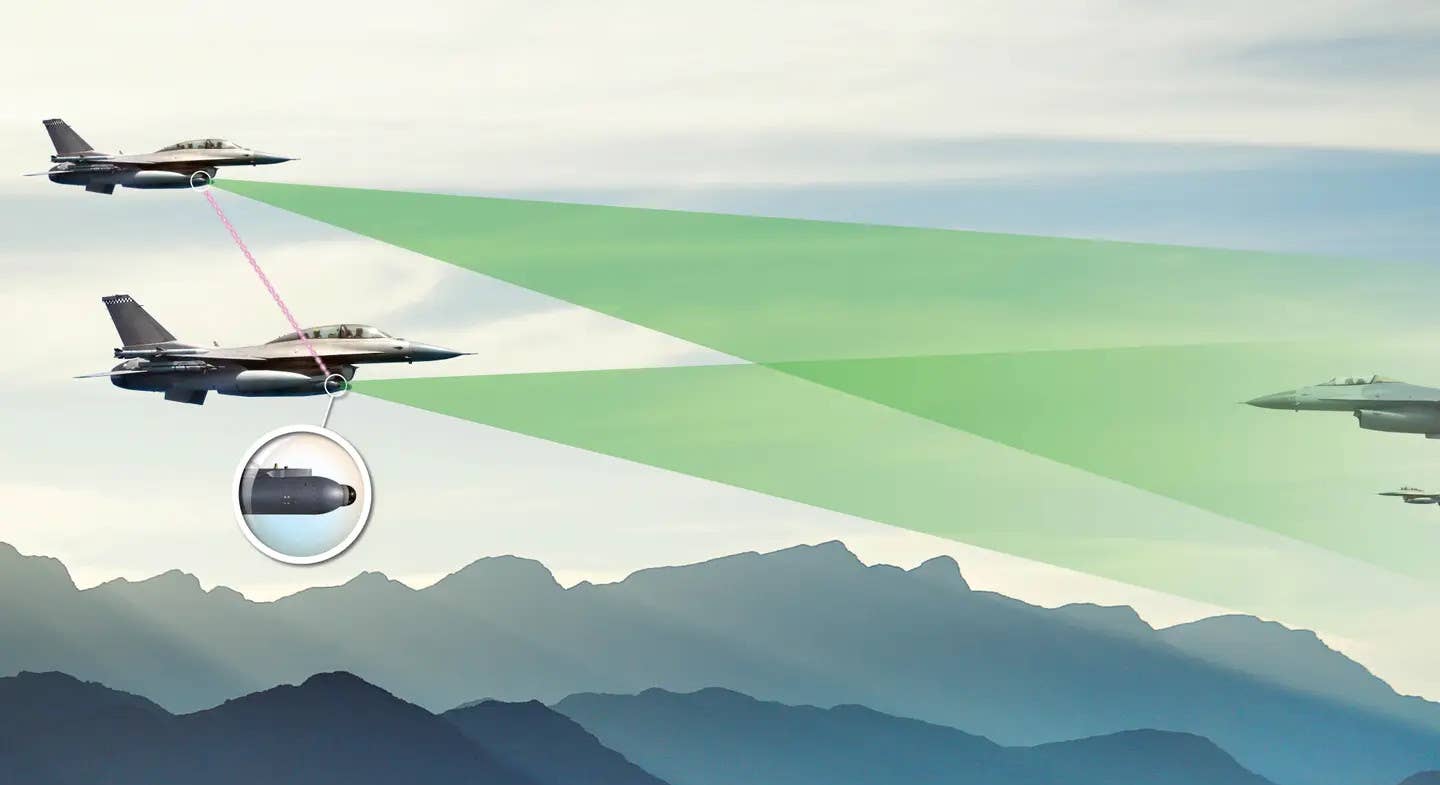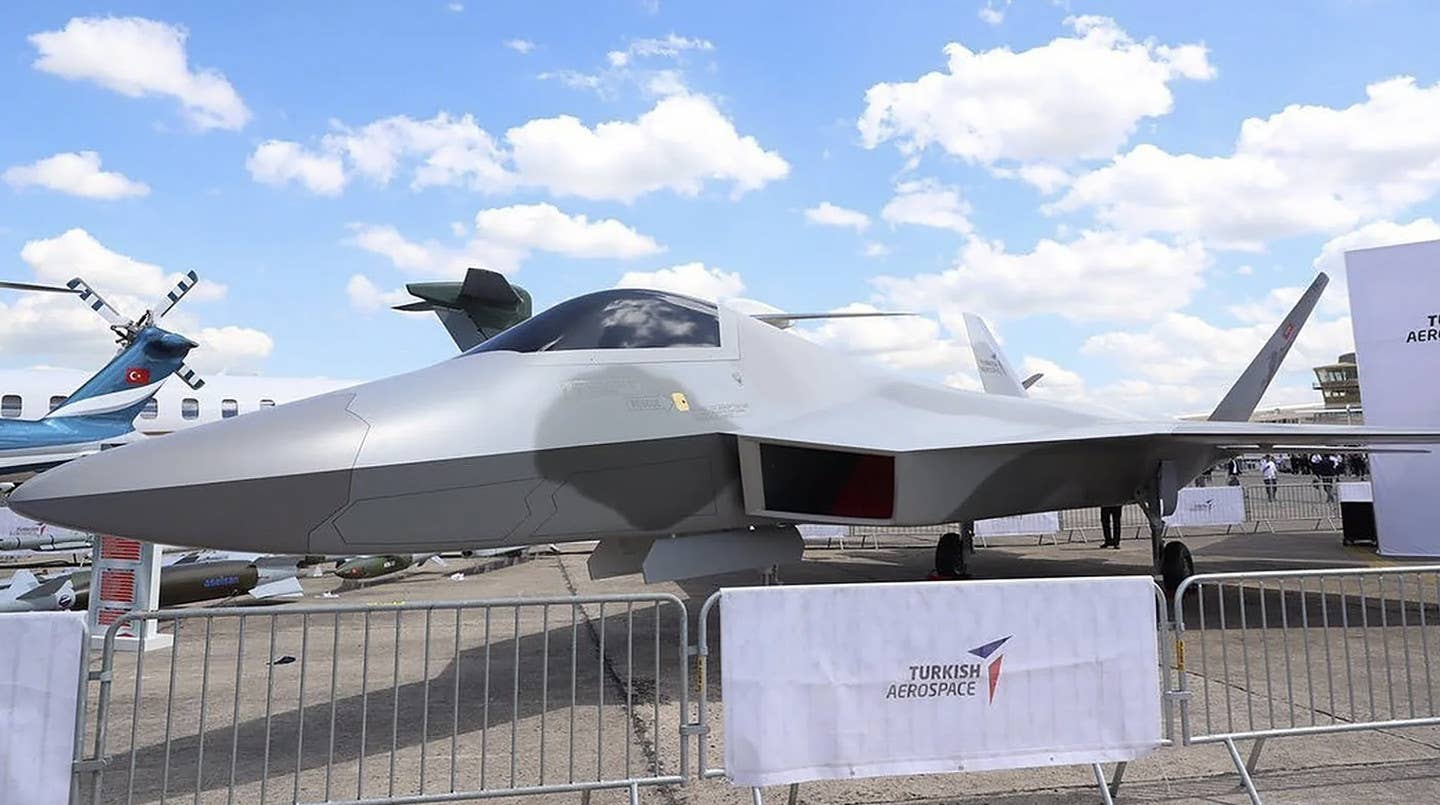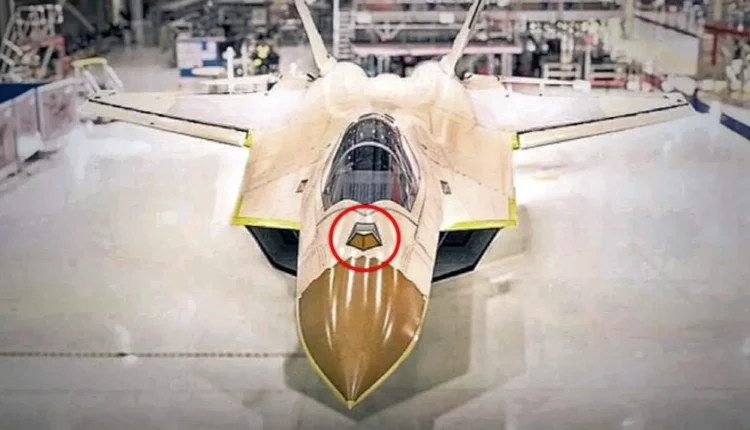©2021 Reporters Post24. All Rights Reserved.
Turkish Aerospace Industries says that construction of the initial prototype of Turkey’s TF-X next-generation fighter jet has been progressing steadily since the first images of the jet were released last year. This reportedly includes the installation of a more complete nose section that features faceted enclosures for what appears to be a dedicated infrared search and track sensor system, or IRST, right in front of the cockpit, and a multi-purpose electro-optical targeting system, or EOTS, underneath the forward fuselage. No other advanced combat jet design currently fielded or in development appears to have a similar configuration with completely separate internal IRST and EOTS systems.
Pictures reportedly showing the TF-X prototype with its full nose section installed, among other things, appear to have first emerged online in late December. This was just around a month after Turkish Aerospace Industries, which is developing the jet under the Milli Muharip Ucak (MMU, or National Combat Aircraft) program, had offered the first official look at the jet in a significantly less finished state.
Turkish Aerospace Industries CEO Temel Kotil said that the jet may not just be rolled out, but could make its first flight this year, during an interview with CNN Turk earlier today. This would be two years ahead of the schedule Kotil had laid out when a mockup of the aircraft was unveiled in 2019. How this might impact when the first jets enter service, something that had been previously said to be expected to happen by 2030, is not clear.
The video below, taken during an official Turkish Aerospace Industries event, shows the TF-X prototype as it existed in November 2022.
Whether the first flight comes early or not, and while TF-X’s configuration could still change more as time goes on, that it appears to be emerging now with a separate IRST and EOTS is notable. Though the stated plan since at least 2020 has been to incorporate both of these systems onto the jet, it has not been exactly clear how the two would be installed.
A TF-X cockpit mockup that Turkish Aerospace Industries, also known by its Turkish acronym TUSAS, put on display at the Farnborough International Airshow in the United Kingdom last year had very crude representations of the enclosures in front of the nose and under the fuselage, but it remained unclear if this was the final planned configuration. A similar general arrangement, but with the IRST in a non-stealthy enclosure, had been seen in previous computer-generated renderings of the aircraft.
Interestingly, the apparent IRST installation looks similar, in broad strokes, to how Lockheed Martin’s TacIRST has been integrated onto F-5 Advanced Tiger (F-5AT) aggressor jets belonging to private firm Tactical Air Support (TacAir). TacIRST on the F-5s features a staring infrared sensor with a fixed forward field of view above the nose. This is likely the same general concept as on the Turkish fighter, although the sensor sits behind a faceted, low-observable window likely made of coated sapphire glass. This is unlike many typical internally integrated IRSTs where the sensor is fitted inside a bubble enclosure to a gimballed mount of some kind, although it’s possible the sensor of the TF-X could still move to a limited degree. The installation on TF-X could possibly point to the system having some degree of forward-looking infrared capability to help with navigation, including at night and in bad weather conditions, too.
In general, IRST systems are focused on spotting and tracking aerial threats by their infrared signature at extended ranges. IRSTs are not impacted by any features on the targeted aircraft designed to reduce its radar cross-section and are immune to electronic warfare attacks intended to disrupt radar waves and other radio frequency emissions. This makes them valuable alternatives to traditional radars, especially when it comes to operations where stealthy enemy threats or heavy electronic warfare jamming is expected. The sensor is also passive in nature, unlike a radar operating in an active mode, so a target will not be alerted to the fact that they have been detected. An IRST is also an incredibly powerful companion to radar, where they can work together to spot, track, and engage targets.
A built-in EOTS, like the one found on all variants of the F-35 Joint Strike Fighter, may have some degree of IRST-like capability, but are primarily intended to provide a higher fidelity view of targets and other objects of interest at shorter ranges and laser-designate those targets if need be. As such, they can be used for targeting enemy forces, including on the ground or at sea, as well as more general surveillance and reconnaissance tasks and just to give a pilot increased situational awareness. Separate IRST and EOTS capabilities on the TF-X could be beneficial in various ways. At its most basic, it would give the aircraft a dedicated IRST capability, while allowing the pilot to use the EOTS for other tasks simultaneously. Also, a more dedicated IRST sensor system will be better at scanning and tracking targets at longer distances than an EOTS that has primarily an air-to-ground target and surveillance function.
The forward field of view is also superior for an IRST sensor mounted atop the aircraft as opposed to below it. Finally, EOTS and IRST can work together, with EOTS providing a higher-fidelity view of what IRST spots, even at night, for target identification purposes, a critical capability in highly dynamic counter-air scenarios. Today, targeting pods, such as Sniper, are used for this purpose on U.S. aircraft, such as the F-15C/D community, for instance, although they use the aircraft’s radar for long-range detection, not an IRST, although an IRST is being fielded now. The EOTS can also be used to collect and record video during intercept operations and closer encounters with aircraft of interest.
The main piece of information provided by typical IRST systems is a potential target’s bearing. A single aircraft can determine how far away that object is using other means, but it is generally a time-consuming and obtuse process. Networking IRSTs on multiple aircraft together – a capability that the TF-X may also have – offers one option for more rapidly triangulating the data to determine range, as well as just providing higher-quality tracks on a target.

A Lockheed Martin graphic providing a general visual representation of how data can be fused between multiple aircraft carrying IRSTs in the company’s Legion Pod. Lockheed Martin
IRST systems, historically found more commonly on Russian and Chinese-made fighter jets, have seen a general renaissance in recent years as more and more air forces around the world field or work to field stealthy combat jets and cruise missiles, or at least designs with some degree of low-observable features. So, it’s no surprise that TF-X features an IRST in addition to its EOTS. At the same time, this distributed combination of IRST and EOTS could give the jet distinct additional capabilities compared to other stealthy fighter designs.
Of course, much about the TF-X and its capabilities remain to be seen, despite the apparent progress in the construction of the initial prototype and TUSAS CEO Kotil’s comments about the speed with which the company now hopes to get that jet in the air. In particular, it is still not entirely clear what engines will be used on the fighter. The stated plan has been to use Pratt & Whitney F110 engines, versions of which are assembled under license in Turkey, at least for the initial prototypes, but a chill in recent years in U.S.-Turkish relations has created potential hurdles there. TUSAS’ ultimate plan is to use domestically-developed engines to power the jets.
The importance of developing TF-X in the first place had significantly increased after the U.S. government ejected Turkey from the F-35 Joint Strike Fighter program in 2019 over the country’s purchase of Russian S-400 surface-to-air missile systems. American officials, as well as those from other nations involved in the F-35 program, had raised concerns about potential security risks arising from Turkey operating both the fighters and S-400s.

A mock-up TUSAS unveiled of the TF-X in 2019, which lacked any representation of the IRST and EOTS enclosures. TUSAS
At the same time, there have been signs more recently of a potential thaw in ties between the two countries, including talks about a possible new sale of non-stealthy F-16 fighters for the Turkish Air Force.
Even if TF-X does take the sky for the first time this year, while this would be a huge accomplishment, it is only one part of the development process. There will still be much work needed to integrate and prove-out the aircraft’s various systems, including the IRST and EOTS, as well as massive amounts of software code and other components necessary to enable key capabilities like sensor fusion.
However the TF-X’s development continues to proceed, it has now become clear that the design will feature a novel combination of IRST and EOTS systems, and it will be interesting to learn more about how they are at least intended to function both separately and together.


